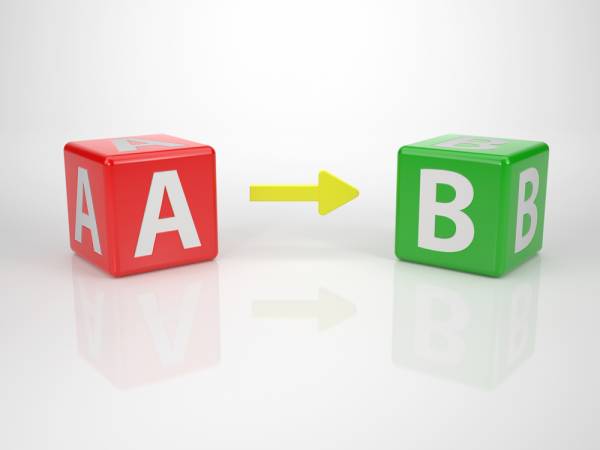Some months ago I mentioned in one of my articles that correlation is not the same as causation. I believe I was referring to the ethnic origin of many champion athletes. I now wish to revisit that statement and apply it in a somewhat different manner.
I am reminded of a story I once heard in my statistics class about the observed phenomenon that the greater the number of churches in Scottish towns, the greater the number of pubs there was as well. This was somewhat embarrassing to the Presbyterian ministers who would definitely have preferred an inverse ratio of such things. Conversely, this was all quite amusing to the “wets” of the towns, who surmised that strict Calvinist observance naturally drove men to drink. What was really going on here? Did religiosity drive one to drink, or did drinking lead one closer to God. (This conundrum also bedeviled their cousins in Appalachia). It turned out that neither was right and the reason for this was all quite mundane.
Statisticians got a look at this and came to the very simple conclusion that one did not drive the other, but that both were driven by a third variable. This is quite a common phenomenon in statistics. We all like to think that A causes B, when in fact A and B are caused by C. What was happening in Scotland and, by the way, in most other countries, was that indeed a “C” was driving this and that “C” was simply the population of the town in question. The bigger the town the more pubs you are going to have and also the more churches you’re going to have. In short, pub and church numbers are correlated, not causative.
Now you are probably wondering, “What does all this have to do with lifting weights?”And no, I’m not going to suggest you all start drinking or even spend a little more time in church, although perhaps some divine intervention in our performances might be much appreciated at some point. What I want to do is remind athletes that their performance in one exercise or lift, even a similar one, does not necessarily correlate to their performance in another.
 The causation is quite simple. Do A, and B will always follow, and in a predictable fashion. A good example in the gym is a relationship between your snatches and clean lifts. The clean is generally 25% higher than the snatch, or conversely, a snatch is 80% of the clean. Yes, there are a few personal variations but for the most part they fall into a pretty narrow range huddling around the 80% mark.
The causation is quite simple. Do A, and B will always follow, and in a predictable fashion. A good example in the gym is a relationship between your snatches and clean lifts. The clean is generally 25% higher than the snatch, or conversely, a snatch is 80% of the clean. Yes, there are a few personal variations but for the most part they fall into a pretty narrow range huddling around the 80% mark.
Another causation situation concerns the power clean as a percentage of a lifter’s full squat clean. Due to the nature of the lifts your power version will usually be around 85% of your full squat version. (By the way, that percentage prevails for both snatch and clean). There are individual variations again, and there is also kind of a problem defining when something becomes a power clean instead of the squat clean, but these figures will do for the illustration I am trying to make.
Now, just what is correlation? Correlation simply means that two phenomena are present at the same time, positively or negatively, but are not causatively connected. For example, back to your snatch and clean example. You always have a positive correlation between them. Increase the clean and chances are your snatch will also increase maintaining the usual 80% (give or take) relationship between the two. This is because the exercises are very similar and use the same muscles in the same manner. It is pretty hard not to get a significant increase in one without the other showing a similar significant increase. It has been noted often that the snatch is always about 80%, give or take, of the clean and jerk. Always. If it’s anywhere outside of this there is something severely wrong. Therefore put in layman’s terms it can be said that the snatch has a correlation of “1.0”compared to the clean and jerk. This implies a perfect relationship or 1:1 ratio.
A correlation of zero would exist between two totally separate events, such as your performance in the clean and jerk compared to the price of oranges at your local supermarket. They have no relationship whatsoever. Everything else is somewhere in between and this “in between”is something that we have to be very much aware of. Something with a high correlation, say, 0.7 or 0.8, indicates that the two variables are heavily related but not perfectly. In weightlifting the best example I can think of is the clean to deadlift relationship.
 Everyone who trains knows that these two lifts are at least somewhat related. If you had a 400lb power clean and a 650lb deadlift, well, that would be within the range of normal. You cannot clean 400lbs unless you can deadlift at least 650, give or take. One thing is certain – if you cannot deadlift 400 you certainly won’t clean 400. But the correlation is not perfect. Just because someone can deadlift 650 does not necessarily mean he or she is going to clean 400 pounds. There is some correlation obviously, but it is not perfect.
Everyone who trains knows that these two lifts are at least somewhat related. If you had a 400lb power clean and a 650lb deadlift, well, that would be within the range of normal. You cannot clean 400lbs unless you can deadlift at least 650, give or take. One thing is certain – if you cannot deadlift 400 you certainly won’t clean 400. But the correlation is not perfect. Just because someone can deadlift 650 does not necessarily mean he or she is going to clean 400 pounds. There is some correlation obviously, but it is not perfect.
Now let’s say you continue to train and build up to a 480lb power clean, i.e., a 20% increase in cleaning power. Would your snatch also go up 25%? Most likely it would, or at least something fairly close. How much would your deadlift increase? You might hope that it would also increase 20% (70lbs) to a new PR of 780lbs. Would this happen? Well, maybe it would and maybe it wouldn’t. Whether it would or not depends entirely on a wide variety of your training parameters.
You see this correlation situation with a lot of lifts performed in the gym. The overhead press and the bench press have a high correlation but not a perfect one. Some people can military press a higher proportion of their bench than others. High correlations also exists with the squat vis-a-vis the clean but they are not 1:1. Squatting strength is very important for all weight athletes – Olympic, power, or bodybuilders – but its ratio is most important for weightlifters. However, in Olympic lifting it is probably the least correlated. We all hear of Olympic lifters who can only squat about 30% more than they clean and jerk.
Conversely we hear of a powerlifter who can manhandle 900lbs in the deadlift, but his cleans barely top 350lbs. This is not to denigrate one form of competitive activity against another, but to merely point out that the two lifts have an imperfect correlation. How high one lift is compared to another depends upon training objectives and training parameters, and the amount of either lift is not dependent on the moral worth of the athletes concerned. Many people in the weight world still can’t seem to get that thing straight.
The upshot here is that you should not put too much store in expecting your other lifts to climb just because you PRed on your pet lift. You may have to do special work on those other lifts.
I will write more about correlations next week, but first I am going to repair to the local pub to plan that. I’ve already hit the church this morning. No correlation.
Photos courtesy of Shutterstock.






